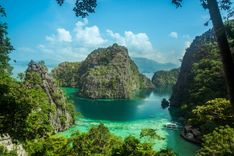#5 Luzon
Luzon is the largest and most diverse Philippine island. In the northern region, you'll find the Banaue Rice Terraces, a UNESCO World Heritage Site that was carved into the mountains over 2,000 years ago by the Ifugao people. Nearby, Sagada is known for its mystical attractions, like the hanging coffins and the Sumaguing Cave, which is great for spelunking.
In southern Luzon, Mount Mayon, an active volcano with a perfect cone shape, stands tall amid lush greenery and hiking trails. Central Luzon is home to Manila, a bustling city that acts as the gateway to the island’s many attractions.
Luzon is vast, so exploring the island requires some time and planning, but it’s worth the effort.
How to get to Luzon
Fly into Manila's Ninoy Aquino International Airport, the main gateway to the Philippines, with international and domestic flights. From Manila, buses connect to provincial destinations like Baguio, Banaue, and Bicol. To reach remote areas like the rice terraces, you'll likely need a combination of buses, jeepneys, and local tours.
When to visit Luzon
The best time to visit this Philippine island is between November and April, during the dry season. This is when the Banaue Rice Terraces are at their most vibrant, with lush green in December and golden colors during the April harvest. The cooler months, from December to February, are perfect for hiking Mount Mayon or exploring Sagada.




















